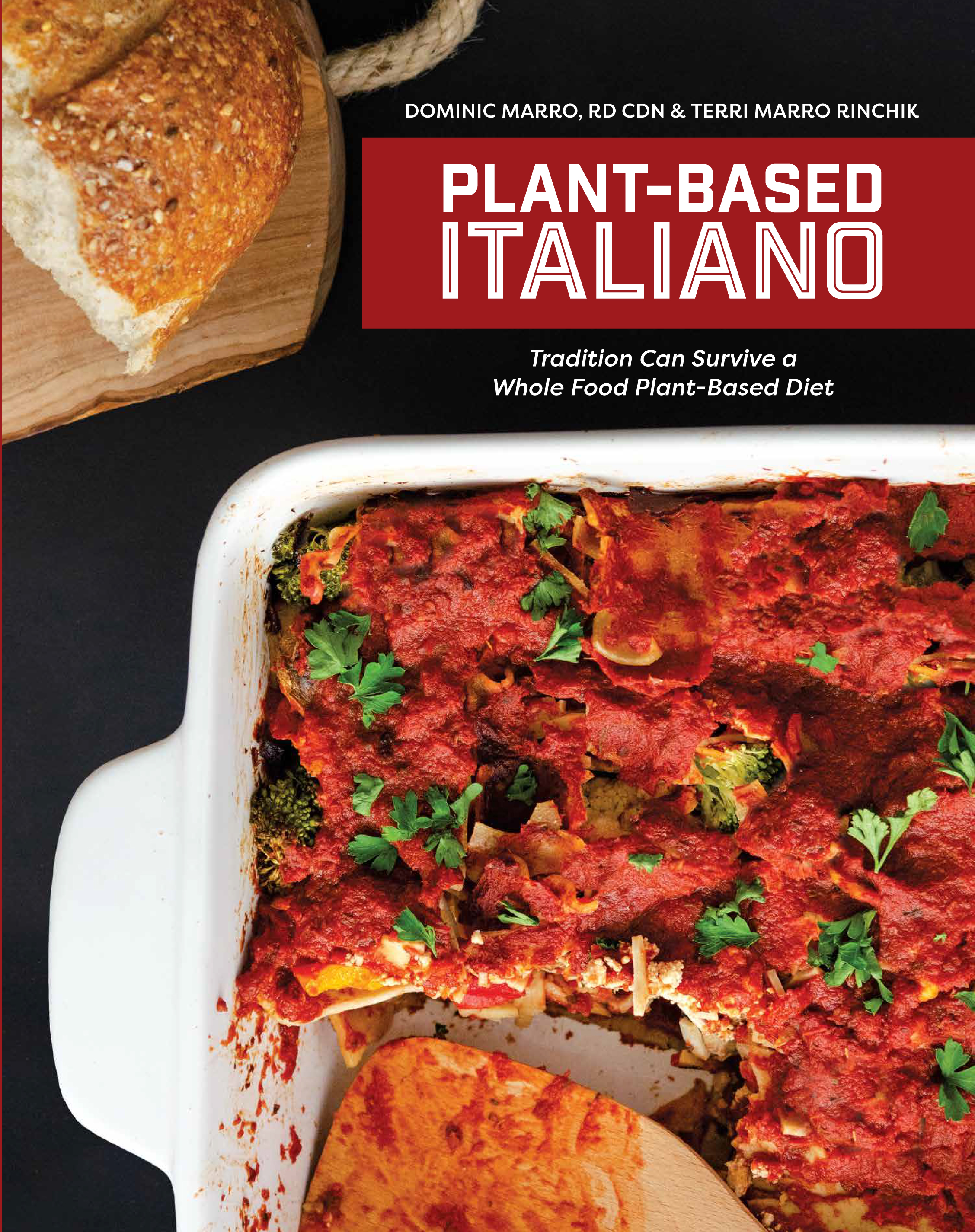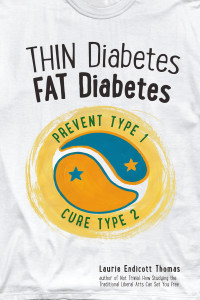Why are we so confused about nutrition?
T. Colin Campbell PhD, the author of The China Study released his latest book in the spring of 2013. It’s called “Whole” and was co-authored by Howard Jacobson PhD.
Dr. Campbell states that The China Study focused on the evidence that tells us a whole food plant based diet is the healthiest human diet. “Whole” focuses on why it’s been so hard to bring that evidence to light – and on what still needs to happen for real change to take place.
Real change requires a shift from a reductionist to a wholistic paradigm in the world of nutrition research.
The reductionist paradigm focuses on minute details taken out of context from the whole system of which they are a part. The reductionist worldview believes that “The whole is equal to the sum of its parts”.
Campbell and Jacobson argue that we must discard the assumption that nutrition is the summation of activity of single nutrients.
Scientists with a reductionist worldview believe that the most reliable approach to establish a causal relationship between diet and disease is a randomized control trial.
Dr. Campbell’s view is exactly the opposite. Dr. Campbell writes “A randomized control study design focuses on one factor, one outcome and generally one mechanism at a time. This is not nutrition; it is pharmacology”. Such studies often create more confusion than clarification.
The “Wholistic” worldview believes that “The whole is greater than the sum of its parts”.
The correlations-based ecological study design is a wholistic research approach. You may view an abstract of such a study by clicking here. Reductionist scientists trash such studies and often state that correlations tell us nothing about diet and disease associations.
Dr. Campbell writes “it is true that nothing conclusive about causation can be established because of the way that these studies are done but this criticism depends on the assumption that investigators are trying to identify single factor causation, again defying what nutrition is”. Dr. Campbell states “the fault line in these studies is the formulation of hypotheses. If these hypotheses are formulated to truly reflect the wholistic characteristic of nutrition where multiple nutrients, biomarkers, and outcomes are simultaneously measured, then assessing causation is much more reasonable”
An example of research with a reductionist study design is a study by PW Parodi “A role for milk proteins and their peptides in cancer prevention”, (Current Pharmaceutical Design 13: 813-828, 2007).
Dr. Campbell responds to this study by writing
“I am not opposed to doing reductionist experiments. Indeed, we did a lot of such experiments and published the results in the very best scientific journals. We worked on the details of carcinogen metabolism, used single nutrients (casein, selected antioxidants, etc.) in intervention studies (similar to randomized clinical trials) and often focused on one outcome (primary liver cancer). The difference is that we tried not to make global conclusions unmindful of the far larger context. As we proceeded from study to study in our research, we sought an ever wider context and attempted to define nutritional principles that were consistent within this wider context. These principles arose from a variety of studies involving multiple nutrients, multiple mechanisms, and multiple outcomes. We also used more than one species (rats, mice, humans) and looked for consistency between different types of experimental study designs. Only by doing this could we establish reliable principles that had breadth and depth”.
I agree with Dr, Campbell in that this is how nutrition science should work!
You can access Dr. Campbell’s full response to this study by clicking here.
As mentioned earlier, the “Wholistic” worldview believes that “The whole is greater than the sum of its parts”. You may ask “The whole what?
The “whole” is the food, but not just the individual food. All foods together consumed by a whole human being as part of a whole lifestyle in a whole environment…. There is always a bigger “whole”.
The profit motive demands the use of a reductionist paradigm in nutrition research. If a specific nutrient can be identified as affecting a specific mechanism, it could lead to the creation of a drug that could be patented. If our motive is solely based on finding out the truth about the relationship between diet and human health, then nutrition research demands a wholistic paradigm.
For decades nutritional scientists have focused on studying one nutrient or food and its effect on one biological or biochemical mechanism. They do this without the knowledge or concern of what other nutritional scientists are doing.
The findings don’t do much to add to our understanding of healthy diets if the authors are blind to the work of thousands of other scientists conducting nutrition research.
The old Hindu story about the elephant and six blind men.helps to explain why the reductionist paradigm in nutrition research is failing us.
In the story, six blind men touch an elephant. Although each man touches the same animal, his determination of the elephant is based only on what he is able to perceive.
The man touching the elephant’s side concluded that the elephant was a wall
The man touching the elephant’s tusk concluded that the elephant was a spear
The man touching the elephant’s trunk concluded that the elephant was a snake
The man touching the elephant’s leg concluded that the elephant was a tree
The man touching the elephant’s ear concluded that the elephant was a fan
The man touching the elephant’s tail concluded that the elephant was a rope
Each man argued loud and long over whose assessment of the elephant was correct. Each was partly right, yet all were wrong.
If my knowledge of elephants was dependent on the conclusions of the six blind men, I’d be thoroughly confused – much like Americans feel when it comes to nutrition.
How often have we heard the media report on a study that showed an association between a certain nutrient and protection against a certain disease, then a few weeks later, we hear about a different study that suggests the same nutrient increases the risk of developing a different disease?
How does this help someone figure out the healthiest way to eat?
Reducing nutrition to the study of individual nutrients taken out of context results in Recommended Daily Allowances (RDAs) for some nutrients. The RDAs form the basis of much of the confusing and essentially meaningless information on Nutrition Facts Labels. RDAs are pretty much useless as they don’t do much to help people move towards a healthier diet.
In reality, we can never know the ideal amount of a specific nutrient a person needs. The need for a nutrient is dependent on so many complex variables (ie. digestion, absorption, storage, excretion etc…).
We will never be able to determine the amount of a nutrient that gets to the functional part of a cell.
We can’t even be confident in the amount of specific nutrients that are in whole plant foods. Variations among individual plant foods can significantly affect nutrient content. Pre-harvest factors such as the location of the fruit on the tree or whether or not a vegetable was grown in an open field instead of under glass or in plastic tunnels can greatly affect nutrient content.
Due to the tremendous variation in nutrition content of fruits and vegetables, it is extremely difficult to scientifically quantify the nutritional value of whole plant foods. Yet most people associate certain plant foods with one specific nutrient.
Some examples include:
- · Carrots and beta carotene
- · Oranges and Vitamin C
- · Tomatoes and Lycopene
- · Bananas and Potassium
Associating various foods with specific nutrients limits our knowledge of nutrition and does not help to steer people towards a health promoting diet.
Dr. Rui Hai Liu of Cornell University led researchers in the study of the antioxidant effect of apples.
The researchers found that vitamin C from apples is only responsible for a small portion (0.4%) of the apple’s anti-oxidant activity. Instead, almost all of this activity in apples is from phytonutrients. The Cornell researchers found that eating 100 grams of fresh apple with skins provided the total anti-oxidant activity equal to 1,500 milligrams of vitamin C. What this study shows is the combination of phytochemicals plays a very important role in anti-oxidant and anti-cancer activity, and the real health benefits may come from a phytochemical mixture (found in foods).
Says Liu, “Scientists are interested in isolating single compounds — such as vitamin C, vitamin E and beta carotene — to see if they exhibit anti-oxidant or anti-cancer benefits. It turns out that none of those works alone to reduce cancer. It’s the combination of flavonoids and polyphenols doing the work.”
It’s the combination of phytochemicals, which are only found in whole and minimally processed plant foods, that provides protection against chronic disease. The results of this study are consistent with many similar studies and help to confirm the importance of eating a diet dominated by whole and minimally processed plant foods.
A researcher with a reductionist worldview would respond to the results of the study by conducting further studies to see if a specific nutrient in apples (out of thousands of phytonutrients) is responsible for the antioxidant activity. As mentioned earlier in this article, this attempt will prove futile. A researcher with a wholistic mindset would ask the question, “Why is it important, from a health perspective, to identify a specific nutrient to explain the antioxidant activity”?
During Howard Jacobson’s presentation at Plant Stock 2013, he asked, “Imagine if we taught “catching a ball” the way we teach nutrition”?
Scientists really don’t know how we catch a ball. At the very least, catching a ball involves “physics, engineering control theory, kinaesthesiology, ethology, perception and the study of expertise”.
Imagine if various aspects of these disciplines were learning prerequisites for all catching instruction classes. Jacobson joked that people would be grabbing for their calculators, computers and text books whenever they were asked to catch a ball. We would have an epidemic of bad catching! People would not have any confidence in the proper way to catch a ball.
Learning nutrition by focusing on specific nutrients and their specific effects has resulted in a lack of confidence among Americans, on what constitutes the ideal human diet.
Healthy, trim, long-lived populations eat diets dominated by whole plant foods with small amounts of meat and fish and little to no processed junk These people don’t need or care to know that the monounsaturated fatty acids in olive oil raise HDL levels or that dairy calcium improves bone density.
I doubt that traditional Okinawans would be very interested in Dr. Campbell’s research that shows casein (major dairy protein) to be a potent tumor promoter.
Dr. Campbell questions these and all such studies because they usually miss the larger context. The China Project became the larger context within which casein, perhaps animal protein in general, relates to human health. Reductionist research results were tested for relevance to the bigger picture.
We’ll continue to be bombarded with nutrition studies. Should they all be ignored until a wholistic paradigm shift occurs? No, but they all should be questioned.
Howard Jacobson recommends asking and answering these three questions when evaluating scientific studies.
1. Is it true?
2. Is it the whole truth?
3. Does it matter?
Is it true?
Some studies are so flawed that doubt is cast on any and all conclusions.
Is it the whole truth?
A study may reveal associations between a single nutrient and a specific biochemical mechanism, but the study may not have accounted for some critical confounding variables.
A study could establish strong correlations between a single nutrient and a specific biochemical mechanism or biomarker and the authors’ conclusion assumes cause and effect when none has been shown.
Conclusions may be biased based on funding sources
Does it Matter?
One should take into account the rapidity, breadth and depth of the effect.
Rapidity – How long does it take for the effects to occur?
Breadth – How many things are affected? (biomarkers, disease states and body states)
Depth – How powerful is the effect?
Research by Dr. T Colin Campbell, Dr. Caldwell Esselstyn, Dr. Neal Barnard Dr. Dean Ornish, and many others has shown that WFPB diets have fast and powerful effects in preventing and treating a variety of chronic diseases.
The “Resources” page on this web site provides links to the web pages of the above researchers and many other experts on WFPB research.
Very few research studies on pharmaceuticals answer the “Does it Matter?” question as well as studies on WFPB diets.
That is because pharmaceuticals treat symptoms of chronic disease and not the root cause of chronic disease. When you treat the cause, the results are often fast, far reaching and profound.
Dietitians, physicians and researchers who are so focused on one nutrient/one disease, ignore (intentionally or unintentionally) the vast knowledge that we already have on the ideal diet for human beings.
Dr Campbell states that many scientists scoff at wholistic nutrition and biomedical research often referring to it as a “scattershot” or “messy” approach.
I contend that the existing reductionist research paradigm has resulted in a “scattershot” and “messy” approach to treating chronic disease.
Medications are usually prescribed and are targeted at specific symptoms and/or biomarkers. It’s often a hit or miss proposition. If the medication is not effective – no worries – there are plenty more medications available. A patient may have to try multiple medications, often in combination, before symptoms subside. Sometimes as the primary symptom subsides, the patient begins experiencing symptoms caused by the initial treatment, prompting the prescription of additional medication. This can eventually lead to a long list of medications that a patient has to juggle every single day. When I worked as a telephone Nutrition Consultant for an insurance company, it was not uncommon to encounter members on more than 15 daily medications.
This is how chronic disease is treated! To paraphrase Dr. John McDougall – “No patient gets healthier – they’re still sick, but now they drag around a bag of pills with them.”
Reductionist studies are like the trees in a forest. I believe that wholistic studies allow us to make some sense of the trees by allowing us to see the forest. Dr. Campbell and his colleagues have stepped out from among the trees in order to get a clearer picture of the forest.
Those of us interested in nutrition and health need to do the same.
Once done, more and more researchers, dietitians and physicians will begin to see that the picture clearly shows that a WFPB diet combined with reasonable exercise is the best way to prevent and treat chronic disease.






 E Excerpt from Laurie Endicott Thomas’s amazing book Thin Diabetes – Fat Diabetes by clicking here!
E Excerpt from Laurie Endicott Thomas’s amazing book Thin Diabetes – Fat Diabetes by clicking here!
A quote to sum it up, “The whole is greater than the sum of its parts.”
DLB
Great example of an apple and the multitudes of phytonutritients that are in ONE apple, not just vitamin C. We must look at nutrition as a whole not individual. WFPB diet provides our bodies with everything it needs to maintain homeostasis in our bodies. I agree that a paradigm shift on nutrition is critical in order to move forward towards optimal health. Thanks for sharing🍎